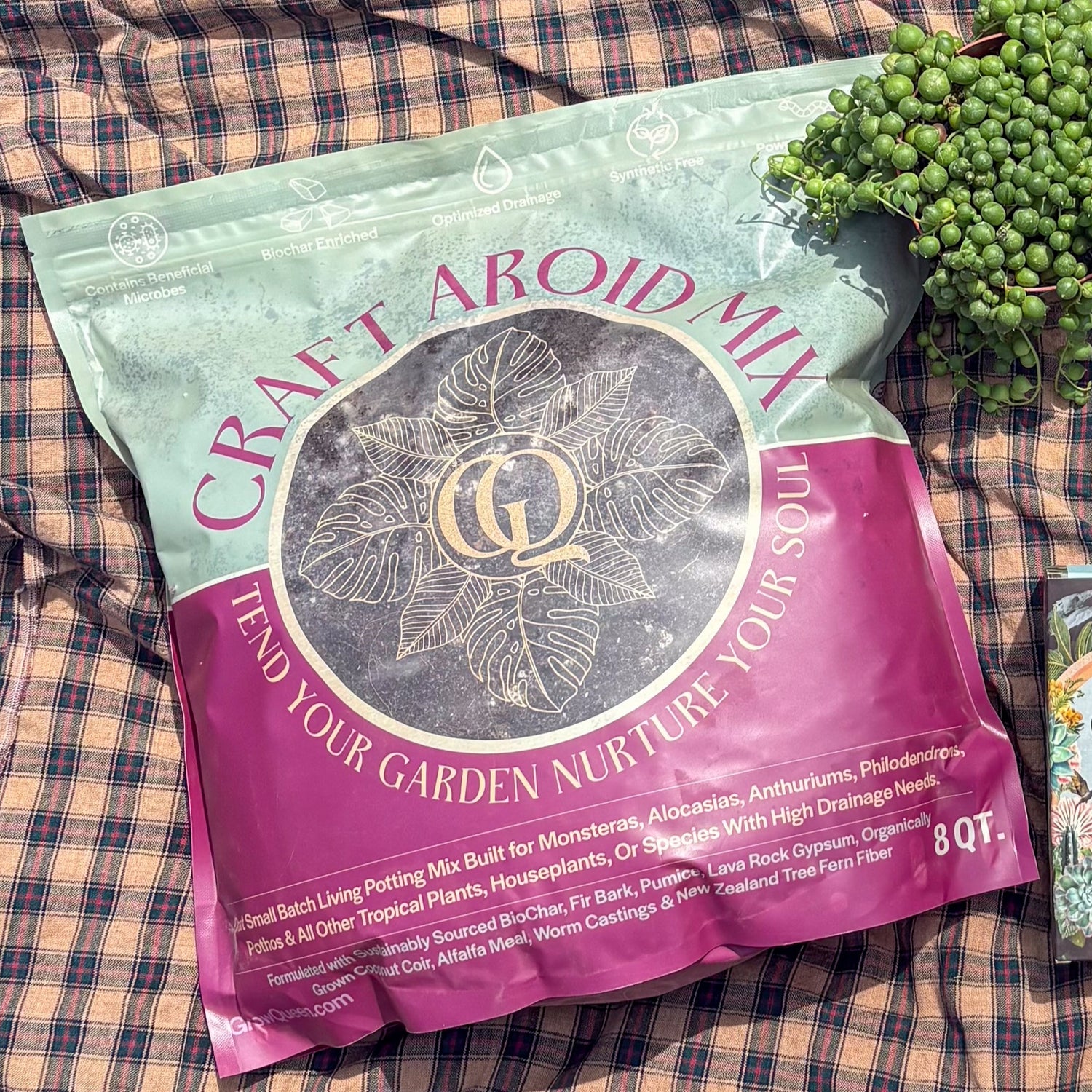We’ve all been there — you wake up one morning, glance at your plants, and suddenly… something’s off.
Tiny webs glistening on your monstera, mysterious sticky spots on your philodendron, or little black flies buzzing out of your soil like a scene from a horror movie.
Don’t panic — every plant parent faces these “plant nightmares” eventually. The key is knowing how to spot the problem early and use the right treatments to nurse your plants back to health.
🕸 1) Spider Mites
What they are: Tiny arachnids that thrive in warm, dry environments. They feed by puncturing leaf cells and sucking out sap, leaving behind pale speckling and fine webbing.
Signs: Dusty or faded-looking leaves, small yellow specks, and webbing between stems or under leaves.
Treatment:
-
Isolate infected plants.
-
Rinse thoroughly — a good shower blast knocks off mites and webs.
-
Increase humidity around plants to make conditions less favorable.
-
Apply neem oil or insecticidal soap to all leaf surfaces, especially undersides. Repeat every 5–7 days for 3–4 cycles.
Grow Queen Tip:
Spider mites love dry, stressed plants. Keep leaves strong and hydrated by feeding regularly with Grow Queen All Purpose Food or Grow Queen Liquid Plant Food — the steady nutrients support leaf cell repair and natural pest resistance.
🪰 2) Fungus Gnats
What they are: Tiny black flies whose larvae live in damp soil and feed on roots and decaying matter.
Signs: Flies hovering near the soil, slow growth, or seedlings collapsing despite proper watering.
Treatment:
-
Let the top 1–2 inches of soil dry between waterings.
-
Add a layer of coarse perlite or sand on top to block egg-laying.
-
Use yellow sticky traps to catch adults.
-
Treat larvae with Mosquito Bits (BTI) or beneficial nematodes in your water.
Grow Queen Tip:
Fungus gnats thrive in compact, soggy soil. Repot into Grow Queen Aroid Mix — its chunky, well-draining texture keeps air flowing around roots and prevents standing moisture that gnats love. Feed lightly afterward with Grow Queen Liquid Food to help roots recover.
🕯 3) Mealybugs
What they are: White, cottony insects that cluster around stems and leaf joints. They secrete sticky honeydew and weaken your plant over time.
Signs: Cottony tufts, sticky residue, yellowing, or stunted growth.
Treatment:
-
Wipe each visible bug with a cotton swab dipped in 70% isopropyl alcohol.
-
Rinse the plant after cleaning.
-
Apply neem oil or insecticidal soap to cover missed bugs and prevent new outbreaks.
-
Repeat weekly for 3–4 weeks.
Grow Queen Tip:
Mealybugs love weak, nutrient-deprived plants. Regular feeding with Grow Queen All Purpose Food helps maintain cell wall strength and resilience. For root mealybugs, repot into Grow Queen Aroid Mix for fresh, clean soil with better aeration.
👁 4) Thrips
What they are: Slender, winged pests that scrape plant tissue and suck out cell sap. They spread fast and can carry plant viruses.
Signs: Silvery streaks or patchy discoloration on leaves, black dots (droppings), or distorted new growth.
Treatment:
-
Isolate the plant.
-
Rinse thoroughly and prune damaged leaves.
-
Spray with neem oil or insecticidal soap on both sides of leaves.
-
Use blue or yellow sticky traps to catch adults.
-
Repeat weekly until no new damage appears.
Grow Queen Tip:
Thrips often target fast-growing plants. Support healthy new growth with Grow Queen Liquid Food, which delivers a steady, gentle nutrient stream for cell recovery and chlorophyll production.
🪴 5) Scale Insects
What they are: Sap-sucking insects with protective shells that attach to stems and leaves. They excrete sticky honeydew and multiply quickly.
Signs: Hard brown bumps on stems or undersides of leaves, sticky residue, yellowing, or leaf drop.
Treatment:
-
Gently scrape off visible scales or wipe with an alcohol-dipped cotton pad.
-
Apply horticultural or neem oil to smother remaining pests.
-
Repeat every 7–10 days until the infestation clears.
Grow Queen Tip:
Plants with strong immune responses fend off scale faster. Feed monthly with Grow Queen All Purpose Food to help them produce natural defense enzymes and regrow damaged tissue.
🌿 6) Aphids
What they are: Small, soft-bodied insects that love tender new growth. They multiply rapidly and secrete honeydew that attracts ants and mold.
Signs: Clusters on new shoots, sticky residue, curling leaves.
Treatment:
-
Spray plants with water to knock them off.
-
Apply insecticidal soap or neem oil thoroughly.
-
Prune heavily infested areas.
-
For outdoor plants, release ladybugs or lacewings as natural predators.
Grow Queen Tip:
Keep new growth strong with Grow Queen Liquid Food to help plants recover quickly from aphid feeding and maintain healthy cell regeneration.
🌱 Preventing the Next Nightmare
Prevention is the best pest control — and it starts with healthy roots and resilient foliage.
Grow Queen Prevention Plan:
-
Always quarantine new plants for 2–3 weeks.
-
Use Grow Queen Aroid Mix for aeration and drainage — pests thrive in wet, compact soil.
-
Feed monthly with Grow Queen All Purpose Food for steady nutrition.
-
Supplement with Grow Queen Liquid Plant Food between feeds to promote root and leaf vitality.
-
Keep leaves clean and dry between treatments — healthy, hydrated tissue naturally resists pests.
-
Inspect plants weekly (especially undersides and new leaves).
💀 When All Else Fails
If a plant is severely infested or declining, it might be best to prune it hard, repot in fresh Grow Queen soil, and start fresh. Remember — it’s not a loss; it’s a rebirth.
Because every plant parent knows… sometimes, saving a plant from the grave is the ultimate Halloween miracle. 👻🌿



0 comments